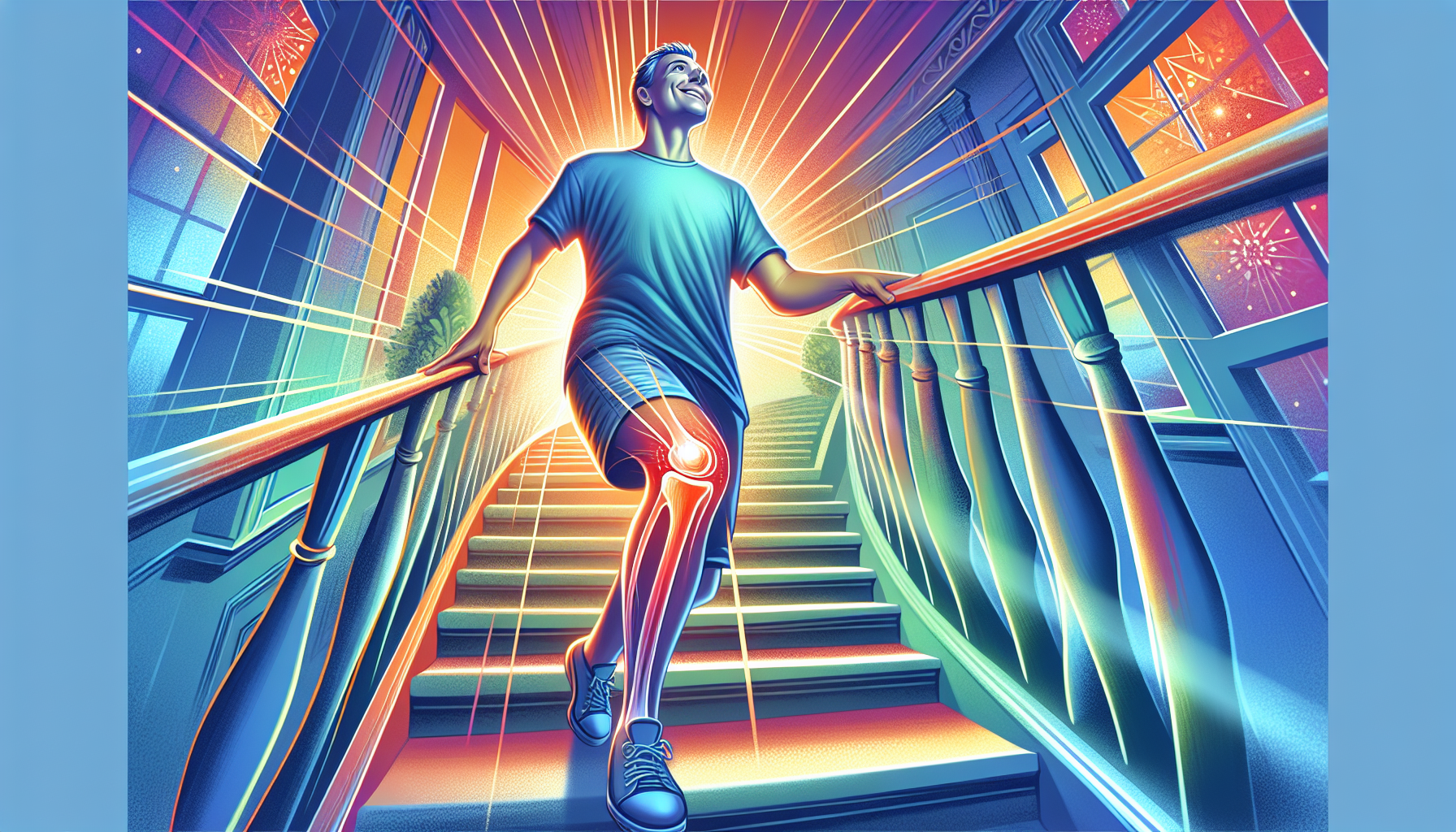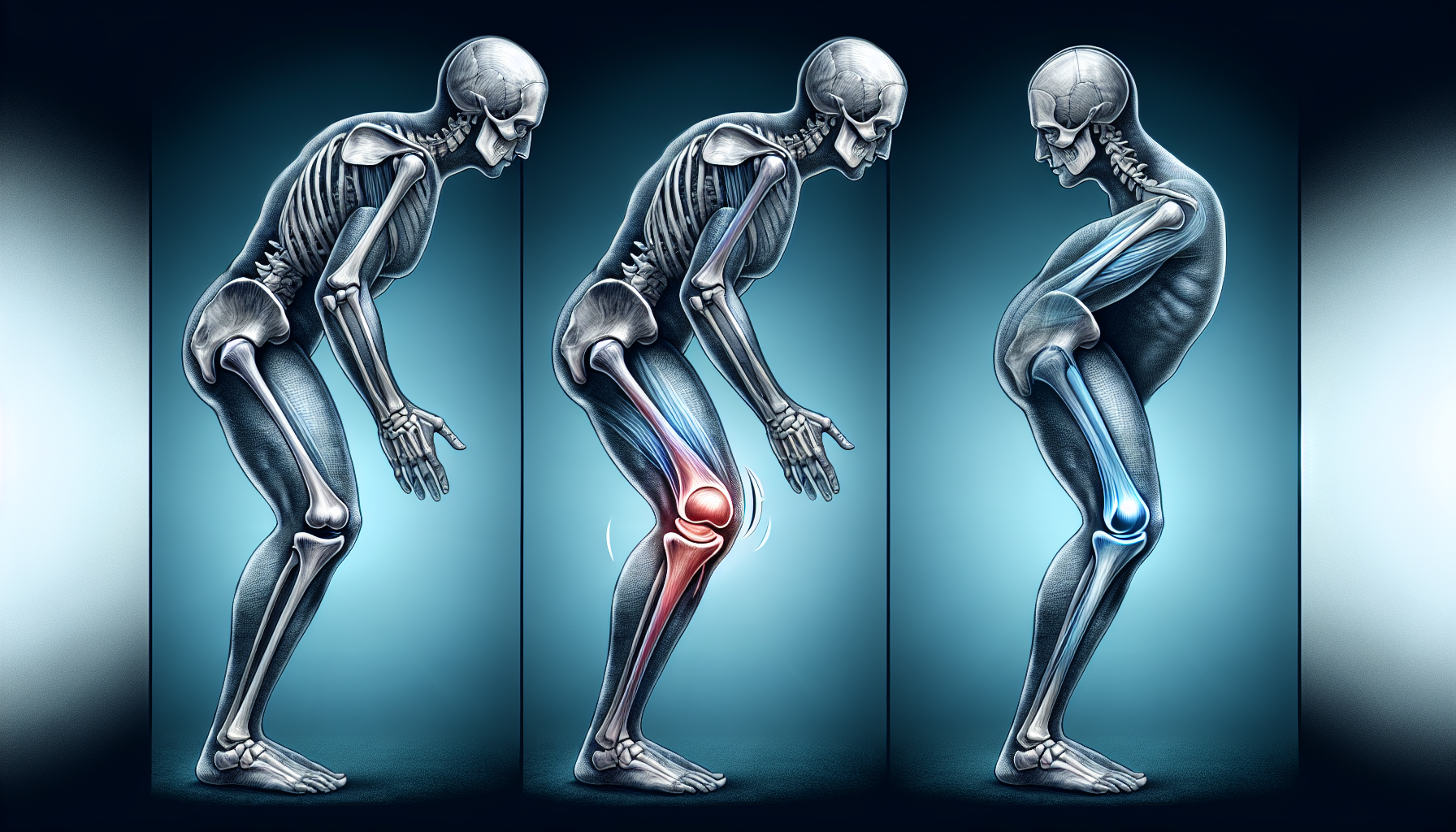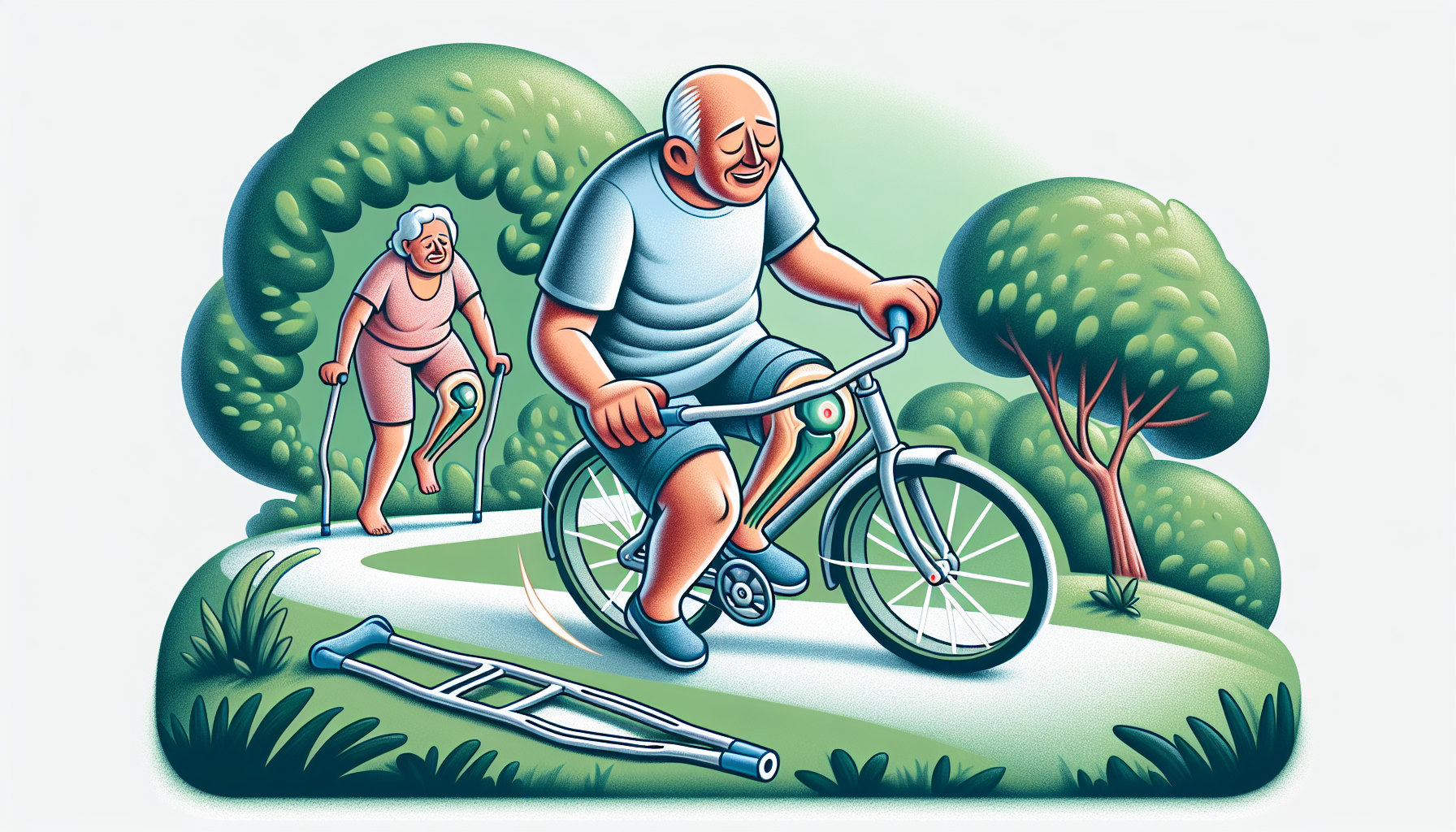If knee pain is hampering your lifestyle, knee arthroplasty may offer the relief and freedom you seek. This significant surgical procedure boasts a proven track record in reducing pain, enhancing mobility, and ultimately elevating the quality of everyday life. Here, we explore the “top benefits of knee arthroplasty how it improves quality of life”, demonstrating the substantial ways it enhances patients’ lives post-surgery, from pain relief to improved mental well-being.
Key Takeaways
- Knee arthroplasty significantly relieves chronic knee pain, restores movement, and reduces discomfort for patients with degenerative joint diseases, improving their overall quality of life.
- Post-surgery improvements in mobility and stability enhance patients’ independence in daily activities and reduce the risk of falls, contributing to both physical and mental well-being.
- Long-term benefits of knee arthroplasty include correction of physical deformities, high patient satisfaction rates, sustained positive outcomes, and economic savings in healthcare costs.
The Pivotal Relief from Chronic Knee Pain
When chronic knee pain becomes a constant companion, the prospect of relief can feel like a distant hope. Yet, knee arthroplasty emerges as a beacon of relief, offering a reprieve to those burdened by the debilitating effects of degenerative joint disease, rheumatoid arthritis, or post-traumatic arthritis. This surgical intervention is not just about alleviating pain; it’s a promise of reclaiming the life that chronic knee pain has stolen.
By undergoing a total knee replacement surgery or a partial knee replacement surgery, patients who have suffered a knee injury experience a dramatic reduction in discomfort and a significant leap towards regaining the active lifestyle they once enjoyed, as the worn-out knee joint is replaced with a prosthetic.
Alleviating Severe Pain
The journey to recovery post-knee surgery, specifically knee arthroplasty, is marked by strategic pain control, which involves a tailored blend of medications ranging from prescription painkillers to over-the-counter options like NSAIDs and acetaminophen. Patients frequently report that the surgical discomfort, while present, is a manageable trade-off for the long-term pain relief they experience. Indeed, the majority of patients who undergo this procedure find the temporary post-operative pain to be well worth enduring, as they witness a significant decline in the severity of their knee pain, liberating them from the previously unyielding grasp of chronic discomfort.
Restoring Movement and Flexibility
As patients embark on the road to recovery, the regained range of motion in the knee joint becomes a testament to the surgery’s success. Within weeks, many achieve a degree of flexibility that allows them to partake in simple pleasures and essential activities without the hindrance of stiffness and pain. This newfound mobility is not just a morning benefit; it weaves through the fabric of their entire day, elevating their quality of life to new heights.
Key to this transformation is the dedication to physical therapy, a critical component in strengthening the muscles that support the knee and enhancing the joint’s flexibility for long-term benefits.
The Road to Greater Mobility and Stability

As the patient’s path unfolds beyond the immediate post-surgery phase, the horizon expands with the promise of greater mobility and stability. These improvements are not merely incremental; they are life-changing. The act of walking, once a source of trepidation, becomes a stride of confidence. Patients often find themselves walking longer distances with ease, a clear indicator of the significant improvements achieved through knee arthroplasty.
This enhanced capability extends beyond walking, encompassing a range of physical activities that foster cardiovascular health, muscle strength, and coordination.
Independence in Daily Activities
The ripple effect of improved mobility is profound, touching every facet of daily life. The ability to perform tasks with renewed ease not only alleviates physical constraints but also restores a sense of autonomy.
Adherence to recovery guidelines plays a pivotal role in achieving this independence, as does the commitment to a comprehensive rehabilitation program. The integration of home exercises with supervised physical therapy sessions lays the foundation for a successful return to activities such as climbing stairs and transitioning from sitting to standing without encountering pain or difficulty.
Reduced Risk of Falls
A stable gait is a cornerstone of safety, particularly for elderly patients, and knee arthroplasty plays a crucial role in enhancing joint stability. The surgical process not only rebuilds the knee but also fortifies the ligaments, equipping the patient with a more reliable foundation. As strength and mobility return through diligent rehabilitation, the shadow of falls recedes, replaced by a steadier, more confident step.
This increased stability not only enriches the patient’s sense of security but also carries significant benefits in reducing health-related costs by preventing injuries that are often the byproduct of instability.
Enhancing Mental and Physical Wellness

While the physical benefits of knee arthroplasty are evident, the surgery’s impact on mental and physical wellness is equally profound. The challenges of the recovery period, which can include stress and discomfort, sometimes lead to postoperative depression. Addressing this aspect is critical, as a holistic approach to healing encompasses both the body and the mind.
A comprehensive treatment plan, including medications, therapy, and support networks, is essential in fostering an environment where mental wellness can flourish alongside physical recovery.
Boost to Mental Health
The journey towards mental health post-knee arthroplasty can be transformative. As the relentless distress of chronic pain dissipates, patients often experience a substantial reduction in stress and anxiety levels. Incorporating psychological interventions into routine nursing care has been shown to uplift patients’ spirits, instilling hope and fostering a more positive mood.
This holistic care approach not only enhances mental well-being but also correlates with greater satisfaction with the overall hospital experience, underscoring the significant benefits of addressing the psychological aspects of recovery.
Better Sleep Patterns
In the wake of improved mental health and pain reduction, patients commonly report a notable improvement in sleep quality. Restful sleep, an essential component of overall well-being, is often disrupted by chronic pain. However, as knee arthroplasty alleviates this pain, nights become more peaceful, and the restorative power of sleep can fully manifest.
This positive shift in sleep patterns is not only a reflection of physical healing but also an indication of enhanced mental tranquility.
Long-Term Health and Economic Benefits

The influence of knee arthroplasty extends far beyond the immediate postoperative phase, offering a spectrum of long-term health and economic benefits. Measures such as early mobilization and preventive strategies against complications like blood clots are instrumental in fostering a safe and successful recovery. From a broader perspective, knee arthroplasty represents a cost-effective solution, especially when compared to the long-term management of knee osteoarthritis without surgery.
While patient satisfaction plays a pivotal role in these outcomes, the long-term economic implications are undeniably favorable.
Promoting an Active Lifestyle
Embracing an active lifestyle is a crucial aspect of long-term health post-knee arthroplasty. As patients recover, they often find themselves able to engage in low-impact sports and activities they previously enjoyed, contributing to their overall physical well-being. This resurgence of activity is not only beneficial for joint health but also for warding off conditions associated with inactivity such as heart disease and diabetes.
Furthermore, maintaining an active lifestyle plays a significant role in weight management, which is essential for the longevity of the prosthetic joint and the patient’s health.
Healthcare Cost Savings
The economic advantages of knee arthroplasty are multifaceted, encompassing both direct and indirect cost savings. Innovations in post-surgical care, such as improved antibiotic administration, have led to a decline in infection rates, thereby reducing treatment costs. Additionally, the decrease in the need for pain medication and fewer doctor visits contribute to a general reduction in healthcare expenditures.
These savings are further augmented by the diminished likelihood of additional surgeries or complications, underscoring the procedure’s value from a financial perspective.
Correcting Deformities and Improving Posture

One of the lesser-discussed yet significant benefits of knee arthroplasty is its ability to correct physical deformities, such as bowlegs or knock-knees. These corrections are not merely cosmetic; they lead to improved biomechanics and better overall limb alignment. Prior to surgery, a thorough assessment, including motion analysis and imaging tests, informs the strategy for achieving optimal alignment.
As a result, patients enjoy not only a more aesthetically pleasing appearance but also a reduction in strain on other joints, contributing to an overall improvement in posture and gait.
High Success Rates and Patient Outcomes
The testament to the efficacy of total knee arthroplasty lies in its impressive success rates and the satisfaction expressed by patients. With a majority reporting considerable pain relief and enhanced functionality, the procedure boasts an outstanding record of improving lives. The longevity of modern knee implants, which can extend beyond two decades, is a pivotal factor in these sustained positive outcomes.
Additionally, patient satisfaction is not only a marker of success but also translates into lower societal costs, highlighting the procedure’s broad-reaching impact.
Summary
In the panorama of medical advancements, knee arthroplasty stands out as a beacon of hope for those plagued by chronic knee pain. From the pivotal relief of pain to the regained independence in daily activities, the procedure’s benefits are as diverse as they are profound. By enhancing mental and physical wellness, correcting deformities, and offering high success rates, knee arthroplasty not only improves the quality of life but also provides a cost-effective, long-term solution to a pervasive health issue. For many, it is not just a surgical procedure; it is a journey to rediscovery and a path to a life unburdened by pain.
Frequently Asked Questions
How long does it take to recover full mobility after knee arthroplasty?
Most patients can expect to achieve significant improvements in mobility and resume daily activities without pre-surgery pain approximately three months after knee arthroplasty.
Can knee arthroplasty correct knee deformities?
Yes, knee arthroplasty can correct knee deformities such as bowlegs or knock-knees, improving limb alignment and reducing strain on other joints.
What is the lifespan of a prosthetic knee joint?
The lifespan of a prosthetic knee joint is typically designed to last 15 to 20 years or more, offering long-term relief and an enhanced quality of life.
Does knee arthroplasty lead to improved mental health?
Yes, knee arthroplasty can lead to improved mental health by reducing stress and anxiety associated with chronic pain.
Are there economic benefits to undergoing knee arthroplasty?
Yes, knee arthroplasty can result in decreased healthcare costs due to reduced medication usage, fewer doctor visits, and a lower risk of additional health complications.





 William D. Murrell, MD
William D. Murrell, MD Thomas B. Evely, DO
Thomas B. Evely, DO Clifford Voigt, MD
Clifford Voigt, MD Karthikeyan Chinnakkannu, MD
Karthikeyan Chinnakkannu, MD Max N. Seiter, MD
Max N. Seiter, MD Demetris Delos, MD
Demetris Delos, MD Lauren M. Fabian, MD
Lauren M. Fabian, MD